REGIONAL PRECEDENTS
The Organic Structure of Social Power in the Arabic Countries.
The internal relations of the families and the groups of local families and clans, are characterized by incorporating into them certain rites, rules, attitudes and taboos. This set of «social procedures» gather, value and quantify his vital needs, his primary emotions and his beliefs. The Moslem religion is followed in the wide geopolitical zone that we treat. Almost all they are of the sunni branch. This accepts the Koran and the Sunna of the Prophet, his facts and sayings (hadithes) due gathered by the disciples, as the orthodox sources of Allah’s revelation to the men. The differences between they reside in the rigor with which they examine and accept the sources of the Sunna. And this assumption of the Islam forms a part of the social inculturation, affirmation and cohesion of these groups.
The social code, which receives different names according to the countries, establishes certain rights for the individual and demands of him certain social duties, towards the family, the clan and the tribe. The disputes on women, gold or valid money and lands are in the origin of the sustaiined hatreds between the tribes. And they must be sustained up to avenging the perceived affront. The own fragility and weakness of the society demands the appearance of the protective values. These might be the hospitality, the loyalty, the friendship, the scorn to the foreigns, the revenge of affronts and hurts, the individual and collective honor. Each of them protects and enlarges in some measure the human group. The relations are interpersonal, in the areas of the family, the clan and the region. They are projected by the opportunity, the nearness, the exchange of goods and the relation. And they become strong with the loyalty, the respect of the accepted procedures and the time of treatment. And depending on the accumulation of these elementary successive acts. The hospitality takes implicit the reciprocity, when one travels, is alone and is not aggressive. This sometimes is perfected by the endowment of an escort to the traveler in insecure zones. The violation of this «escort» by an assault supposes a serious affront for the clan that provided her. The loyalty between the members of the group, for very unstable that is sometimes, cohesions the group. The honor inflates the autoesteem and the appearance before everybody. The revenge, in absence of a real institutional justice, looks for punishment and then repair of the hurts and affronts real or perceived. The scorn of the foreigns not adorned with good qualities or menacing to the group, seeks to prevent them “a priori” his integration in him, as a form of passive defense. The tied friendship tightens the bouns with the equals and the group. If someone joins these elementary groups, it is an object of loyalty and friendship in a personal way. These values would increase by his action, modes and personal behavior.
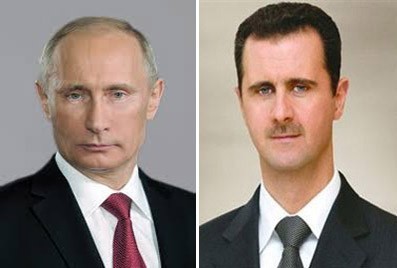 TWO SELFISH «ALLIES»…
TWO SELFISH «ALLIES»…
The natural tribal authority is organic, born from himself, structured in his familiar units or social cells. The smaller and isolated is the social group, the power of his natural authority will be the more moderating and of integration, acting as the first between the «equal ones». In these cases, the meeting of the active members (men, hunters) of the clan in assemblies, yurgas, etc., have the supreme and decision-making value. And it is sanctioning of the deviant or solvent conducts to the group. The local chiefs are like favoured negotiators with the different regional and national governments. They enjoy a personal authority more than institutional. And, sometimes, his decisions can be ignored by the adult males, if they are not confirmed by these assemblies. The more be perfected and advance towards the exterior the society, modernizing and being complicated, the power of this authority will become strong and grow and will spread in economic and political areas of action.
This natural tribal structure gives the real practical value and sense to the loyalties and the mundane interests, always relative and still opportunists, of the Arabs. Graphical, paradoxical (for going abreast against the educations of the Islam) and still excessively, we might express it this way: «My tribe and I, against the world; my clan and I against the tribe; my family and I, against the clan; my brother and I, against the family; I, against my brother».
The acelerated Development of the Syrian Civil war.
From the pacific multitudinous manifestations for almost the whole country that was realized at the beginning of 2011, the social revolt has given an important qualitative step in his development and extension. It has become more radical and has «taken the weapons» against the regime. Extending his «social commotion waves» all over the country, to all the participants, to the neighboring countries and up to the foreign powers
Far there already are the manifestations of the young opponents, which did not see to the violence as an acceptable option of national liberation. Nevertheless, some analysts defend that the illegal executions of soldiers, policemen and civilians sympathetic with the regime began almost from the beginning of the widespread protests. And others attributes this radicalization of positions to the selective and progressive repression of the regime.
 PESHMERGAS IN KOBANI (A CANADIAN VOLUNTEER)
PESHMERGAS IN KOBANI (A CANADIAN VOLUNTEER)
To this joins the increasing islamization of the armed opposition. Initially the manifestations were beginnig from mosques or central places. And then, worship was begun to give to the «martyrs» and using the islamist rhetoric in the communications and declarations and in the name of the irregular revolt groups. From the shout in the first videoes hung on the Network or sent outside the country «the people wants the fall of the regime», they have passed to «the people wants the proclamation of the Yihad by the ulemas and mufties». This raising is not lay. It is a raising led by more or less practicing Muslims of the Islam. Lay is the corrupt and greedy regime of the Assad, where the not Islamic confessions were respected and protected. And that has lost the aptitude to defend and to represent the people. This is the “social justification” of supporting and respecting an exclusive dictatorship, almost always dynastic, in exchange for his class privileges.
 IRAQIS TRAINING TO FIGHT HOUSE TO HOUSE.
IRAQIS TRAINING TO FIGHT HOUSE TO HOUSE.
The government of the Assad and his political equipment have left forming a lot of time ago a socialist and national regime. Since they neither represent, neither defend, nor integrate the particular and collective interests of his nation. Now they only lead and protect the members of the wide social religious oligarchy, that monopolizes and distributes in different degrees the institutional, social and economic power of Syria. The Syrian regime is crystallized, without fluency, so much socially, as ideologically and administratively. And is turning into the rind of a «political social fruit», withered, sterile and empty.
For the schemes of the foreign, calm television viewers in his houses at many Km. from the violent facts, the combats are ferocious. But it resides in that to the enemy who tries to kill or to mutilate you from covered and reinforced positions, first he is softened by the direct heavy fire, you cut his retreat occupying a crossing street beyond and his defensive position is assaulted from the ceiling or from the soil, by successive assured bounds, if he has managed to last so much (very strange). Unfortunately here are of no use the romantic resources of «shoot you first, gentlemen rebels». To obtain the decision and to come to the end, the better thing is to show the teeth from the beginning and acting with determination. Though neither the military men nor the rebels have the doctrine or the experience of the urban fighting…
THE INTERVENTION OF THE FOREIGN POWERS
American Initiatives against the EI.
In September, 1914, the USA coordinated a global alliance of western and Arabic nations to stop militarily the sweeping advance of the Islamic State, before the urgent request of help of Iraq. For it, the allies would not deploy combat ground units. It has passed a year of daily dedication to the air selective bombardment, producing more than 7 thousand air attacks to him over individual targets in Iraq and Syria (combat and of heavy fire positions, command or communication buildings, vehicles, training centers) and a vague number of effective falls, between 5 and 8 thousand militants of the EI, with diverse degrees of training and implication. But, the conceptual and operational coherence of the air allied action, has not managed «to debilitate, nor to degrade, and not even, to destroy», paraphrasing the president Obama, the Islamic State with his actions. Which has counter-attacked lately in al-Ramadi, the Anbar’s capital, removing, by the fault of a sandstorm, the glorious armed forces of Iraq; in Palmira, establishing a projection towards Damascus; in Deir ez Zour, occupying the capital and surrounding the Syrian military forces deployed at the west; in Hanaka, disputing the great frontier northeastern Syrian province to the peshmergas of the YPG and relieving the pressure that the EI receives at the east of Alepo and on Raqqa.
 MR. ASHTON CARTER.
MR. ASHTON CARTER.
The artillery, the aviation, with his heavy and precise fires, allow to blind, disturb, neutralize and still to destroy the groun enemy, in increasing order of hurts and effects. The heavy fires support the ground forces, in an employment of combined arms. And to beat the fortifications, the positions of combat, of heavy fire and of antitanks, the enemy bolts, perpendicularly established to the own advance, and the enemy reserves in the different levels of action and to realize the fight counter batteries. The ground forces are those that occupy, clean, clear and keep in the own hands, the attacked enemy positions. Frustrating the reappearances of the enemy between the rocky debris or the nearby bushes and rejecting forceful and definitively his local counter shocks and his more deliberate counterattacks.
 THE HEROE OF THE GREAT TASK, GEN. JAMES TERRY…
THE HEROE OF THE GREAT TASK, GEN. JAMES TERRY…
In the summer of 2014, the United States began to train to Syrian sunnis young volunteers to integrate them, at a beginning, in the weaken and demoralized Free Syrian Army (FSA). His tasks were to attack so much the military forces of Bashar the-Assad, the National Army of Syria (NAS), as the salafists yihadists of the Islamic State of Iraq and the Levant, in the Syrian zones where they were deployed. Reinforcing, this way, the order of battle of the FSA. The training fields of this light irregular infantry were placing in the oriental center of Jordan. Before the recruits’ acceptance, it was established an ideological political filter, directed to detecting possible yihadists or governmental volunteers and that turned out to be a fiasco, for its results. In this training of several weeks also took part, according to the sources, France and Great Britain, and even, apparently, Israeli commands. The initial plan was to manage to train up approximately 5 thousand men, using several batches of recruits. But the attempt got reduced to graduate from the » boots camp» around 3 thousand men, of which, the majority simply deserted. And the rest of the mediocrely formed joined different radical rebel armed groups in Syria.
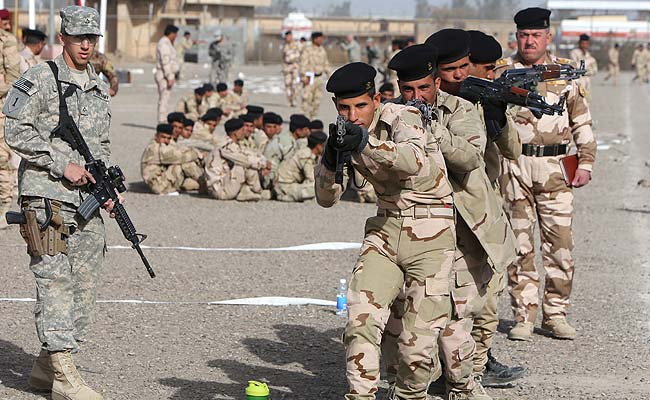 IRAQIS WILL FIGHT FINE AGAINST THE WIND…
IRAQIS WILL FIGHT FINE AGAINST THE WIND…
Another attempt of forming Syrian soldiers of lay or moderate ideology was based on a training plan of «up to 15 thousand Syrians voluntaries » on Turkey. Other sources talk of forming 5 thousand soldiers. But both numbers turn out to be ridiculous for the magnitude and complexity of the tasks that would entrust them and for his poorly «combat specific capacity», which would say the expert colonel Trevor N. Dupuy. The date of ending of his «plan» never was ventured by the American oficials in charge. In view of the «deficiencies» previously detected, a very high level of exigency was established in the selection of the men to forming. As consequence of it, only a few dozens of volunteers have been trained since then. And we think that they possess a conviction and motivation flaccid and blurry. It is of indicating the case of the «so called» 30 ª division of the FSA, formed by less than 80 soldiers and that entered Alepo’s zone on July, 2015. In less than one week of «operations», 12 were kidnapped and 18 were hurt, by the irregular of the Front al-Nusrah. It was the first group or batch of Syrian rebels that Washington instructed in the neighboring Turkey. Also was get prisoner by the yihadists, the commander of 30 ª division, Naim Hassan. Al-Nusrah also attacked his barrack at the north of Aleppo, and the rest of the divisional force, around 30 terrified soldiers, ran to sheltering in Afrín, a Kurdish enclave in the north of the province. We think, simply, that the rebels trained by the USA refused to face the salafists yihadists of the al-Qaeda’s franchise and simply broke and got dispersed.
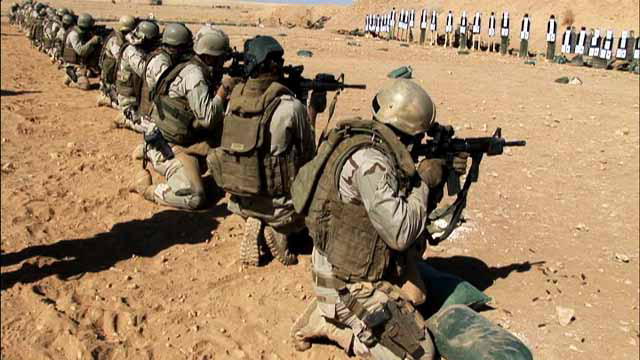 NOBODY IS SHOOTING AT THEM…
NOBODY IS SHOOTING AT THEM…
This way, the ground forces with could count the USA and his Coalition in this geopolitical zone, to attack the EI in his controlled territory, are: the Iraqi army, who in the spring of 2014, before the Great Disaster, was possessing 200 thousand theoretical men in his battle order; the peshmergas of the Syrian YPG and of the autonomous Kurdish government of Iraq, and the sectarian shiis Iraqi militias, theoretically obedient to the government of Baghdad, but trained and guided by the Iranians. The Iraqi peshmergas received permission of Turkey to cross his territory to attack from the north Kobane’s frontier city, occupied by the IS. Managing to liberate it in a joint effort, including the allied aviation. But, in February, 2015, they were unable to at least harass the «wreckers escorted squads» of the Islamic State, who were demolishing Nimrud’s archaeological deposit, in Niniveh’s province, placed half a way between Mosul and Erbil, his capital.
 IN AMERLI, BEFORE THE SUNNIS VILLAGES’ MASACRE, AUGUST 2014…
IN AMERLI, BEFORE THE SUNNIS VILLAGES’ MASACRE, AUGUST 2014…
The shiis militias were activated from the summer of 2014 by the general Qassem Suleimani, sent urgently by Teheran, in support of the shii government of al-Maliki. To compose a rapid containment dike to the advance of the sunnis of the IS. After Mosul’s capture and his appearance in force for all the north and center of Iraq in June and July, 2014. And to realize the enormous task of giving these militias, supported by units of the Revolutionary Guard of Iran (the pashdaran: the army of the guardians of the Islamic revolution), a sufficient action unity and a combat motivation. And to try, by measured, short and successive steps, to be defeating and displacing the yihadistas of the IS, in hard combats, which will be fundamentally urban.
Russia takes an Initiative in Middle East.
From around the beginning of July, 2015, the Russians have been increasing his military direct presence in Syria. His armed forces have principally established in the Latakia, covering Tarsus’s surroundings, his only naval base in the Mediterranean. They include fighterbombers, assault and of troops movement and of rescue helicopters, not driven aircraft of exploration and bombardment and the ground corresponding units of support and of security. And now, from the ends of September, they are bombarding the positions of the armed rebels to al-Assad’s regime, at the southwest of Aleppo; in the Latakia; close to Hama, Homs and Damascus, in the Orontes basin; in Raqqa and other enclaves of the IS, in the north-east of the country and in the great Syrian eastern desert. A spokesman of the Russian Defense Department declared that «they would not indefinitely operate there» and that they were calculating that they would need «approximately 100 days» of air assaults. The Kurdish peshmerrgas of the YPG, the national allies of the USA, deployed by the whole center eastern border with Turkey, have not been bothered. Between those who have suffered his unexpected assaults are the irregular forces of the Front al-Nusrah for the Liberation of the Peoples of the East, the national subsidiary of al-Qaeda. That are so dangerous and ideologically radical as the muyahidines of the Islamic State, but less cruel and less militarily capable.
 THE USELESS AND SECTARIAN IRAQ’S EX-PRIME MINESTER.
THE USELESS AND SECTARIAN IRAQ’S EX-PRIME MINESTER.
To the reproaches of some western countries against this intervention, Putin and Lavrov argued that the «multinational Coalition of the 60 allies» was bombarding the salafists yihadists from September, 2014, without having for it a mandate of the UNO. Sure that Obama’s coalition was attacking in Iraq, with the theoretical «previous daily permission» of the Iraqi government. In fact, the four stars’ general James Terry, who is the commander of the American forces in Iraq from November, 2014, acts as an undeserved speaker for his high graduation, with the government and the Iraqi discredited armed forces and militias. But the assaults on Syria of the allies were not possessing the consent of his regime and were operationally going to supporting the peshmergas and debilitating the IS. Let’s stand out that the Russians, as the mentioned leaders have justified themselves, » are very polite and are operating in Syria with invitation of his government».
 OF WHOM ARE THEY LAUGHING…?
OF WHOM ARE THEY LAUGHING…?
It is of remembering that Syria was during decades the allied in the Middle East of the USSR, and today of Russia. And that Syria was also considered during decades a “terrorist antiwestern state”. Of the style of North Korea. Literally flooding the whole geopolitical Islamic region with the assault rifles AK and the grenade-launchers of hollow load RPG, for the guerrilla groups of “popular libration”…
Russia wants to recover his international protagonism and respect. In spite of his diminished demographic, economic and structural capacities and his democratic and political loss of prestige, gained with the conflict of Crimea and Ukraine. With the military intervention in Syria, Putin attacks the root of the problem of the fled Syrians: that is the pressure of a cruel and long civil war on them. And it allows him to calm the Europeans with the short-term containment of the massive and constant invasion of those. Looking for an attenuation of the economic sanctions of the European Union to the government of Putin, for his shameless actions in Ukraine for more than year and a half.
Russia also supports and gives a strong accolade to the Syrian regime with his intervention. After 4 and a half years of war, the NSA is exhausted and impoverished by a bleeding of more than 60 thousand dead men, suffering continuous desertions towards the different rebel groups (from the FSA to the yihadists groups) and having great difficulties to mobilize recruits. The soldiers in ranks in April, 2011, if still are suitable, have not been licensed from the service. The militias sent by Hezbola’s chiíes in 2014 to support them have not been sufficient to change the course of the war against al-Assad. The government already did not have sufficient men to realize a few effective operations of counterinsurgency, against the armed rebels who were harassing it from numerous and different fronts or «assault strips» in the whole Syrian geography.
Obama said: «the moral leadership is a much more powerful weapon than the brute force». This is true, when the concerned speakers possess and exhibit the same civil virtues that a democrat. But, when it is a question of beasts, of selfish, of madmen, of unscrupulous opportunists, of peoples that still perceive the force as the instrument of the strongest, this does not serve. It does not matter in the social level in which they are. The leadership is to convince, to direct with the example, to attract the persons towards yourself, for pure pleasure and affinity. To realize a joint labor in benefit of the social group to which one belongs.
And this social role has been left by Obama. And also some time ago is ignored, by carelessness or disability, the European Union. That is not waited in “these fights in these homes”. But, the “political thing” has horror and abomina of the «emptinesses», of the «absences». And, this way, the opportunist of Putin has been attracted by the suction of both, anxious to lead another more international episode. For which his people, since the first of 2014, endorses it proudly. To compensate his impoverished national revenue and his diminishing demography.
The intervention of Iran in this Middle East conflict.
At the eastern end of the Middle East is the mumified Shii theocracy of the ayatollahs. These, when they want important and rapid results against his neighbors, use the commands or units of the Republican Guard (the Pashdaran). Which is training, equipping and supporting by diverse ways his coreligionists allies of Syria and of Iraq. The Republican Guard is overlapped in the Iranian regime, forming the unconditional and effective military wing of the Islamic Republic of Iran. She, as the Egyptian military men, possess an economic own very wide support. That guarantees them the operational independence and that generously rewards her dedication and loyalty in the fulfillment of his tasks and missions. The “al-Quds brigades” are a special elite group of he Republican Guard. He devotes himself to the espionage and to realize military actions as “deep incursion forces”. And they exhibit the whole capacities panoply for the surreptitious or dirty war between enemy nations. His commander in chief, the general of division 58-year-old Qassem Suleimani, is included in the list of the most sought terrorists by the USA. A detail: the Supreme Leader of the Iranian Revolution, Ali Jamenei, considers him to be a «living martyr of the revolution». Whom he incorporated in 1980, whith 23 years, in the incipient Republican Guard.
 «YOU WILL BE A FATHER FOR HIM. HE WILL BE A SON FOR YOU».
«YOU WILL BE A FATHER FOR HIM. HE WILL BE A SON FOR YOU».
After the advance of the Islamic State by the north and center of Iraq and the call of the Iraqi shii ayatollah Ali Sistani to the fight against him, Suleimani was sent by Teheran to activate the shiis militias. That were dispersed after the sectarian war. And Suleimani has obtained in a few months the vertebration of all the Iraqi militias against the IS. It has been the IS that who has extracted from the «shades and underground of the State» the general Suleimani. At the end of August, 2014 he appeared in Amerli, Saladino’s province, where it forced the yihadistas to move back. Iran immediately distributed photos of his general operating. But, after the setback of the IS, the shiis militias devastated dozens of sunnis villages of the zone, as collaborators or sympathizers of the enemy. Which is not a good omen for an evolution without sectarisms of the conflict in Iraq.
Likewise, units of the Pashdaran are also operating in Syria against the sunnis enemies os Bashar al-Assad. Reinforcing the Syrian National Army (SNA) and the weared out and insufficent Hezbola iregular forces.
MONGOLS SOUGHT FOR THE ENEMY DISRUPTION, ATTACKING ITS VULNERABILITIES, PENETRATING ITS EMPTY REARWARDS, MOVING FASTER AND CREATING APPEARANCES FOR THE ENEMY.
 GOOD AGAINST A II GENERATION ARMY AND MORE CENTRALIZED THAT OURS: THAT OF SADAM HUSSEIN.
GOOD AGAINST A II GENERATION ARMY AND MORE CENTRALIZED THAT OURS: THAT OF SADAM HUSSEIN. OBAMA FIRED CENTCOM GENERAL MATTIS WITHOUT A PHONE CALL.
OBAMA FIRED CENTCOM GENERAL MATTIS WITHOUT A PHONE CALL. SOME DEADLY RECORDS.
SOME DEADLY RECORDS. COLONEL JOHN BOYD, AN AMERICAN TEORIST OF ITS MANEUVER THEORY.
COLONEL JOHN BOYD, AN AMERICAN TEORIST OF ITS MANEUVER THEORY. 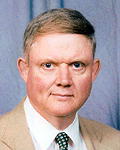 WILLIAM LIND, A CIVIL TEORIST.
WILLIAM LIND, A CIVIL TEORIST. GENERAL DONN STARRY, HIGH COMMAND OF THE U.S. ARMY’S TRADOC.
GENERAL DONN STARRY, HIGH COMMAND OF THE U.S. ARMY’S TRADOC.  ARE THEY LOOKING, DECIDING OR FIGHTING?
ARE THEY LOOKING, DECIDING OR FIGHTING?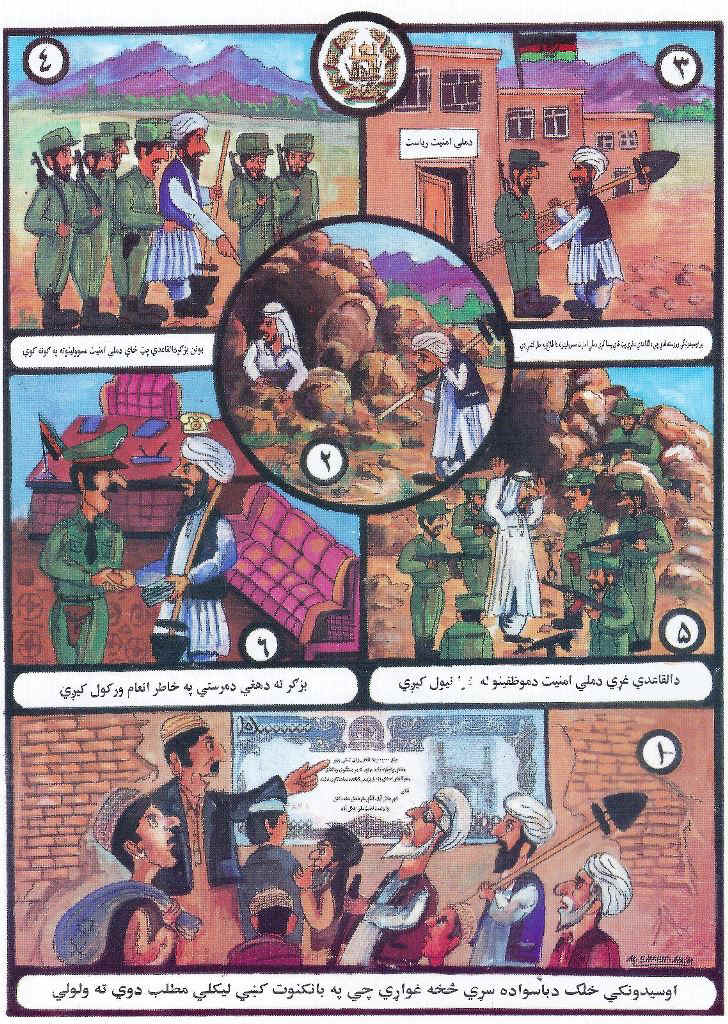 IS IT USEFUL HERE?
IS IT USEFUL HERE? GENERAL VATUTIN.
GENERAL VATUTIN. GENERAL POPOV.
GENERAL POPOV. THE SUPREME SOVIET COMMANDER.
THE SUPREME SOVIET COMMANDER. IN THE COVER OF «TIME» NEWSMAGAZINE…
IN THE COVER OF «TIME» NEWSMAGAZINE… THE GERMAN FIELDMARSCHAL’S COMMAND BATON.
THE GERMAN FIELDMARSCHAL’S COMMAND BATON. FIRE SUPPORT BASE WITH 105 MM. HOWTIZERS.
FIRE SUPPORT BASE WITH 105 MM. HOWTIZERS. REACTIVE ARTILLERY IN ACTION.
REACTIVE ARTILLERY IN ACTION. LAV’s ATTACKED WITHOUT INFANTRY AND ARTILLERY SUPPORT, THROUGH A VERY NARROW LANE, A BRIDGE…
LAV’s ATTACKED WITHOUT INFANTRY AND ARTILLERY SUPPORT, THROUGH A VERY NARROW LANE, A BRIDGE… GOING OUT TO CLOSE FIGHTING.
GOING OUT TO CLOSE FIGHTING. A TIPICAL TEXAS RANGER OF THE XIX CENTURY.
A TIPICAL TEXAS RANGER OF THE XIX CENTURY.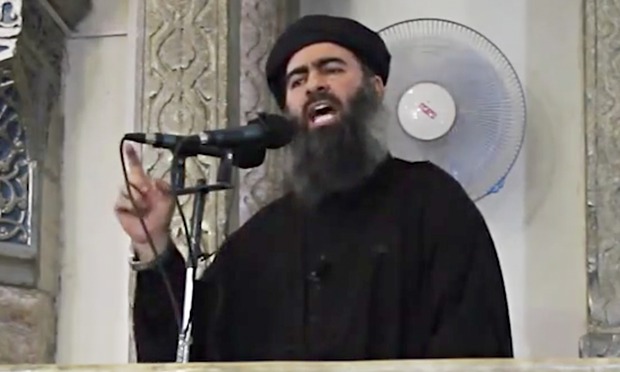 ABU BAKER AL-BAGDADI.
ABU BAKER AL-BAGDADI. AN EXECUTION IN PALMIRA.
AN EXECUTION IN PALMIRA.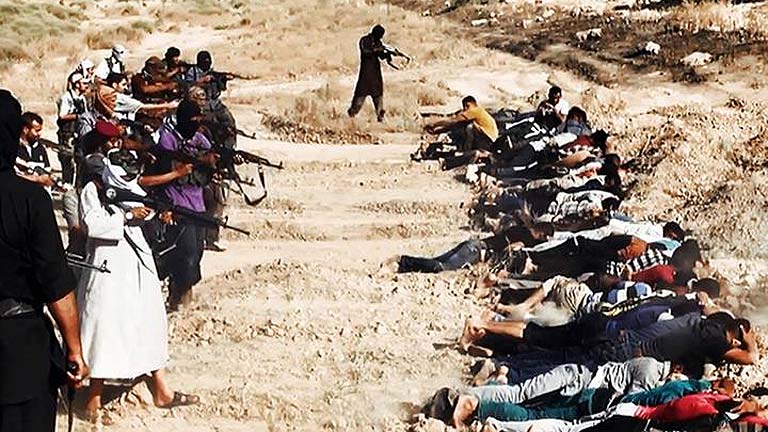 EXECUTIONS OF ENEMIES OF THE DAESH
EXECUTIONS OF ENEMIES OF THE DAESH THEY LOVE TOYOTAS, WHOSE PAY IT?
THEY LOVE TOYOTAS, WHOSE PAY IT?  TWO SELFISH «ALLIES»…
TWO SELFISH «ALLIES»… PESHMERGAS IN KOBANI (A CANADIAN VOLUNTEER)
PESHMERGAS IN KOBANI (A CANADIAN VOLUNTEER) IRAQIS TRAINING TO FIGHT HOUSE TO HOUSE.
IRAQIS TRAINING TO FIGHT HOUSE TO HOUSE. MR. ASHTON CARTER.
MR. ASHTON CARTER. THE HEROE OF THE GREAT TASK, GEN. JAMES TERRY…
THE HEROE OF THE GREAT TASK, GEN. JAMES TERRY… IRAQIS WILL FIGHT FINE AGAINST THE WIND…
IRAQIS WILL FIGHT FINE AGAINST THE WIND… NOBODY IS SHOOTING AT THEM…
NOBODY IS SHOOTING AT THEM… IN AMERLI, BEFORE THE SUNNIS VILLAGES’ MASACRE, AUGUST 2014…
IN AMERLI, BEFORE THE SUNNIS VILLAGES’ MASACRE, AUGUST 2014… THE USELESS AND SECTARIAN IRAQ’S EX-PRIME MINESTER.
THE USELESS AND SECTARIAN IRAQ’S EX-PRIME MINESTER. OF WHOM ARE THEY LAUGHING…?
OF WHOM ARE THEY LAUGHING…?